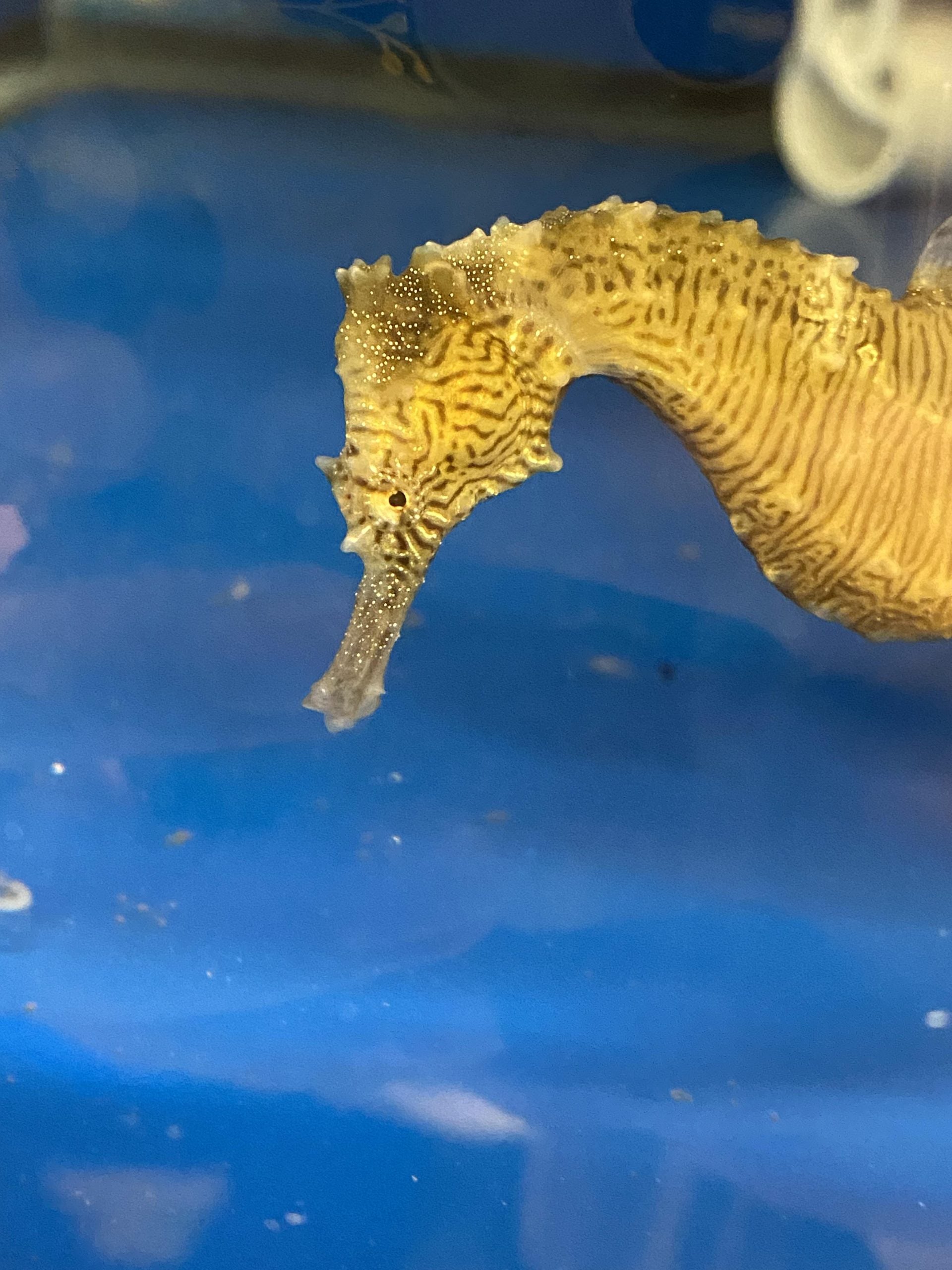 As of 2019, the Bales lab has been diving into a new study species: the lined seahorse!
As of 2019, the Bales lab has been diving into a new study species: the lined seahorse!
We study the neurobiological and epigenetic factors relevant to social behaviors in this marine species. When someone mentions seahorses, you probably start thinking about their rare mating style of the males carrying and birthing the offspring. What we really find fascinating is what comes before the male pregnancy… and what comes after! Their pair bonding! More specifically, we’re interested in the neurobiological and epigenetic factors that induce the formation and maintenance of the pair bond. There is concern over the decline in wild stocks of seahorses due to the unsustainable use of seahorse-derived products in various marke ts, as well as bycatch, habitat loss and pollution. As a result, conservationists are interested in the potential for culturing seahorses to reduce fishing pressure on wild populations. Successful aquaculture of seahorses has yet to flourish due to the sparsity of published information about seahorse behavior in a captive environment. Behavioral studies are uniquely useful for aquaculture as they provide information about animal welfare, and environmental effects on reproduction, things both relevant to the tradeoff of intensifying procedures to increase production at the expense of stress that can affect survival and growth.
ts, as well as bycatch, habitat loss and pollution. As a result, conservationists are interested in the potential for culturing seahorses to reduce fishing pressure on wild populations. Successful aquaculture of seahorses has yet to flourish due to the sparsity of published information about seahorse behavior in a captive environment. Behavioral studies are uniquely useful for aquaculture as they provide information about animal welfare, and environmental effects on reproduction, things both relevant to the tradeoff of intensifying procedures to increase production at the expense of stress that can affect survival and growth.
With this in mind, our team has set out on an exploration into the world of seahorses. Our main goals are:
1) Observing species typical courtship behaviors and trying to understand their function
2) Understanding neurobiological factors that overlap with other pair bonding species
3) Finding similar patterns of ggene expression to more popularly studied pair bonding species.
Some ongoing projects are looking at pair bonding behavior across time and assessing the presence of general characteristics of pair bonding such as partner preferences, stress buffering, mate guarding, behavioral synchronization, and more! Additionally we are working with collaborators to understand seahorse luminance changes as well as analyzing the microbiome of seahorse tanks.
Recent Publications
Relationships between cortisol and urinary androgens in female titi monkeys (Plecturocebus cupreus). Gen Comp Endocrinol. 2021
Parenting costs time: Changes in pair bond maintenance across pregnancy and infant rearing in a monogamous primate (Plecturocebus cupreus). New Dir Child Adolesc Dev. 2021
What is a pair bond? Horm Behav. 2021
Compositional variation in early-life parenting structures alters oxytocin and vasopressin 1a receptor development in prairie voles (Microtus ochrogaster). J Neuroendocrinol. 2021
Biobehavioral organization shapes the immune epigenome in infant rhesus Macaques (Macaca mulatta). Brain Behav Immun. 2021
Cannabinoid receptor Type 1 densities reflect social organization in Microtus. J Comp Neurol. 2021
Pharmacological Prevention of Neonatal Opioid Withdrawal in a Pregnant Guinea Pig Model. Front Pharmacol. 2021

 University of California, Davis (UCD)
University of California, Davis (UCD)